If you have been diving before, you may be looking for new and unusual places to go, and if you’re lucky enough to be in Guatemala, going scuba diving in Lake Atitlan, a dormant volcanic lake is a real possibility.
What is it?
Lake Atitlán is a body of water in a volcanic crater in Guatema8la’s southwestern highlands. The crater was formed approximately 84,000 years ago by a massive volcanic eruption and continued to fill with water over thousands of years until a new ecosystem formed.
Located 1,500 meters above sea level, the lake has a length of 18 kilometers, and a depth of up to 341 meters, which makes it the deepest lake in Central America.
It is ringed by lush, steep hills, and is known for the Mayan villages and other volcanoes that surround it.
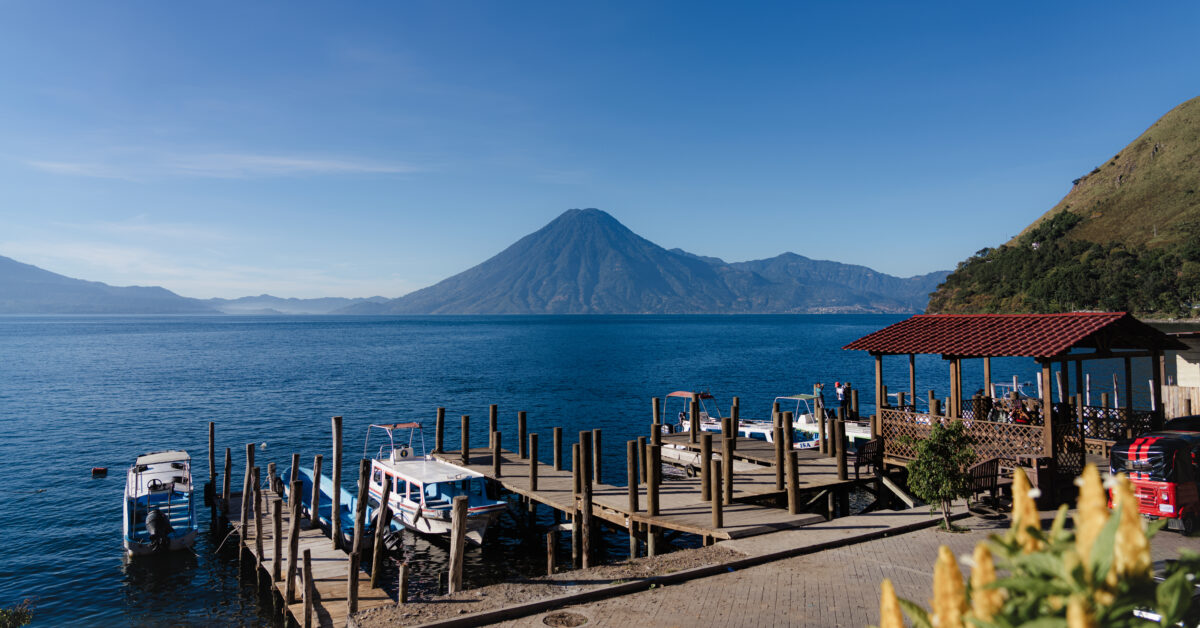
The lake and its villages
Getting down to the lake is quite an experience as it requires you to take steep winding roads that spiral their way down the inner rim of the crater.
As you get to the bottom, you’ll find sporadic villages that dot the water’s edge.
Initially, I stayed in the more popular village of Panajachel. Water taxis are now available, but while I was there, COVID still had things shut down, which meant diving required some relocation.
This landed me in the Laguna Lodge Eco-Resort & Nature Reserve. The hotel was secluded and beautiful. The perfect place to relax.
But it was also home to the worst pizza I have ever had in my life. The sauce was ketchup. Literally… ketchup. Out of every pizza on my foodie list, this is the only one I couldn’t finish.
Pizzas aside, from the hotel, it was about a twenty-minute walk along the edge of the lake to the village of Santa Cruz.
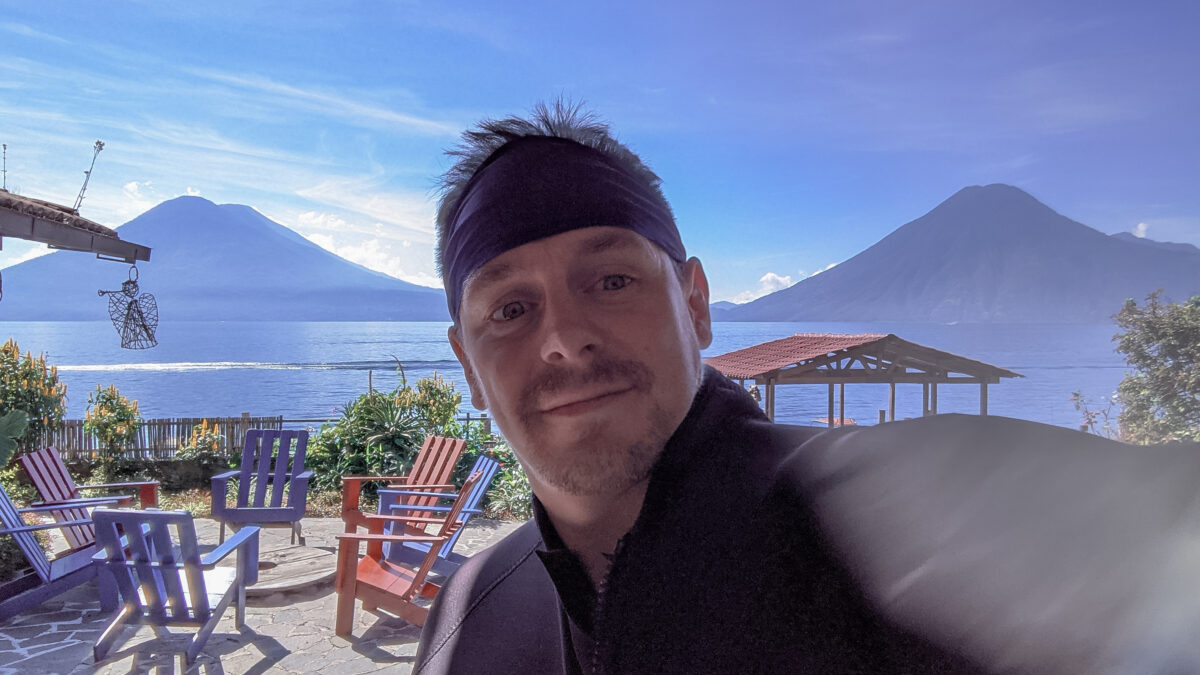
Let’s roll out! You can see on the bottom right where I cracked my phone lens!
ATI Divers
While I was at Lake Atitlan, the only dive shop I could locate was ATI Divers in Santa Cruz.
ATI Divers is located at La Iguana Perdida Hostel. I wish I had stayed there instead as they were more up my alley. I remember telling them where I was staying and their response was “Ahh the vegans.” They then promptly invited me to their barbeque night, which would have been perfect, if I didn’t already need to catch a boat back to Panajachel.
Due to COVID, most of the lake was shut down. Unfortunately, this also included the dive shop which at the time, lacked a staff dive-master.
Luckily, the owners of the shop and the hotel were one and the same. They understood how badly I wanted to go diving in Lake Atitlan and were sympathetic to my plight. Gladly, they offered to take me.
Thanks to their kindness, I was able to become their first diver in almost ten months.
It has since been confirmed by my friend at Due South Travels that ATI Divers is once again fully operational.
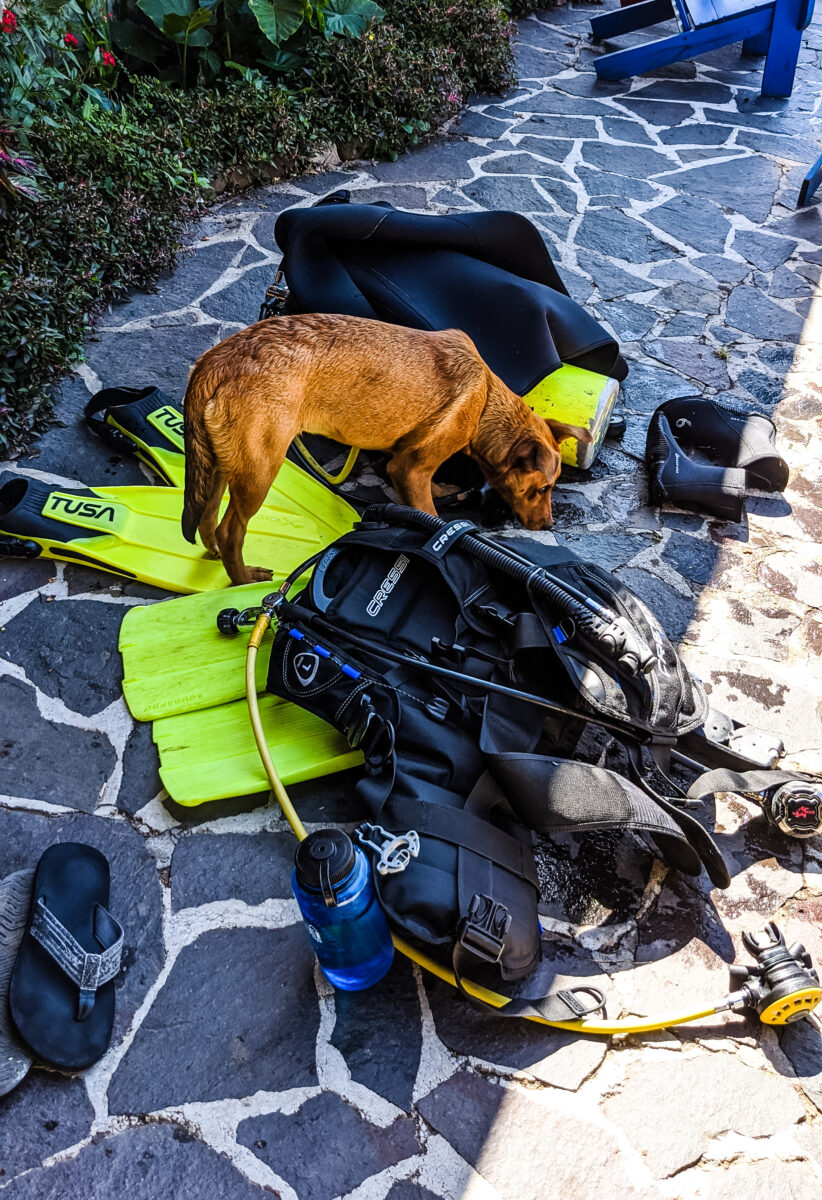
ATI Diver Doggo. He wanted to join… He’s good people.
The Dive Types
The unique environment of Lake Atitlan means that you’re able to experience something new during your dives.
In total, there are currently seven dive sites that are most frequented by ATI Divers. You can find them all listed here: Lake Atitlan Dive Sites
Have you ever cooked an egg while diving? Well, the dive called Agua Caliente, allows you to do just that.
On this dive, you’ll descend to 18 meters where you cook an egg over hot, volcanic vents. As you wait for your egg to cook, you’ll warm your hands in the hot mud.
This was a pretty unique experience and I remember being surprised the first time I sunk my hands into the mud.
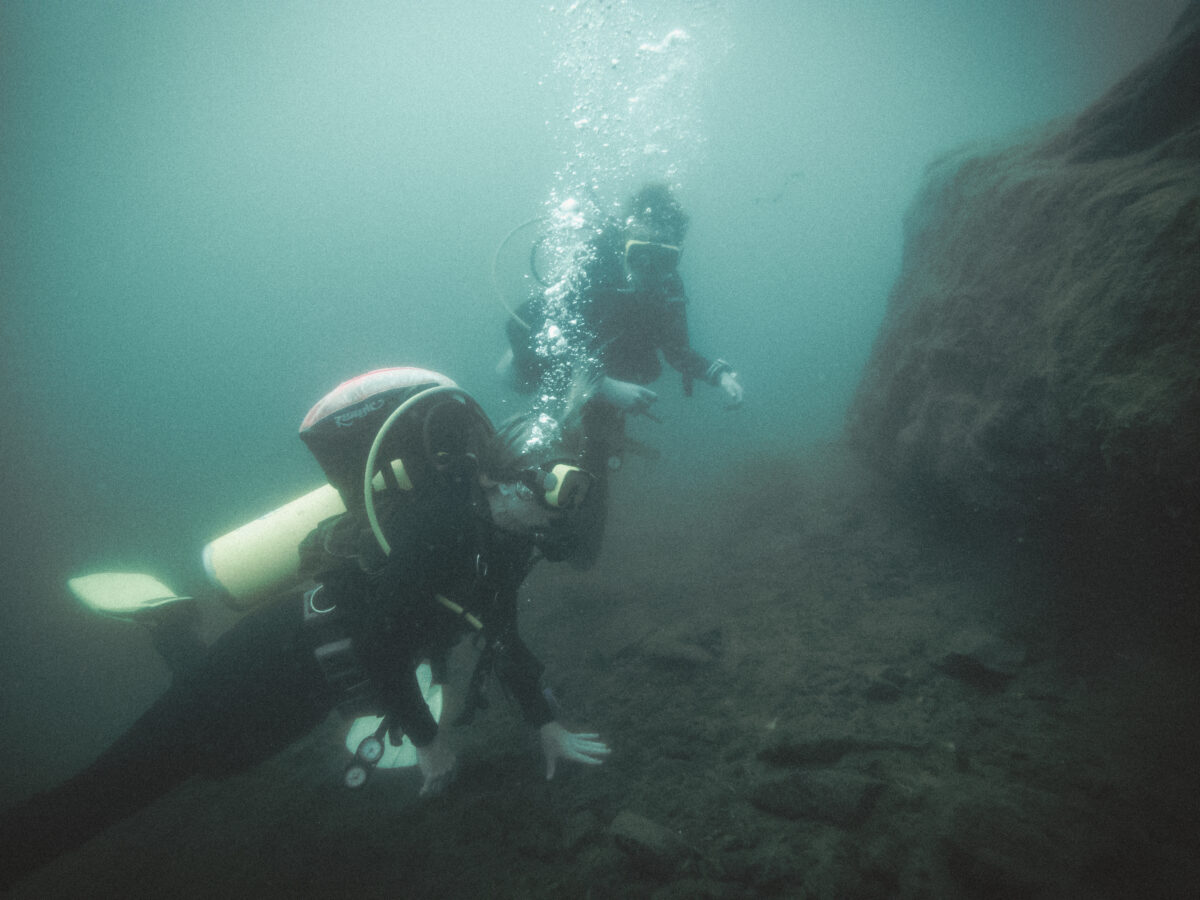
Looking for the hot water vents!
Queue the don’t touch the bottom crowd. Look, it was only mud. Not coral!
Of them all, this dive site is known for having the most fish.
Punta de Loma, my second dive, was just as unique.
Years ago, a hotel was built a bit too low on the edge of the water. At one point, it rained so much that the water level rose considerably and the bottom of the hotel became submerged. You’ll be able to explore the flooded stone terraces and an underwater dock. The dive ends amidst some great volcanic scenery.
Since then, the water level has again dropped and almost returned to normal. You can still dive through parts, and it was cool to experience, but things were getting a bit shallow.
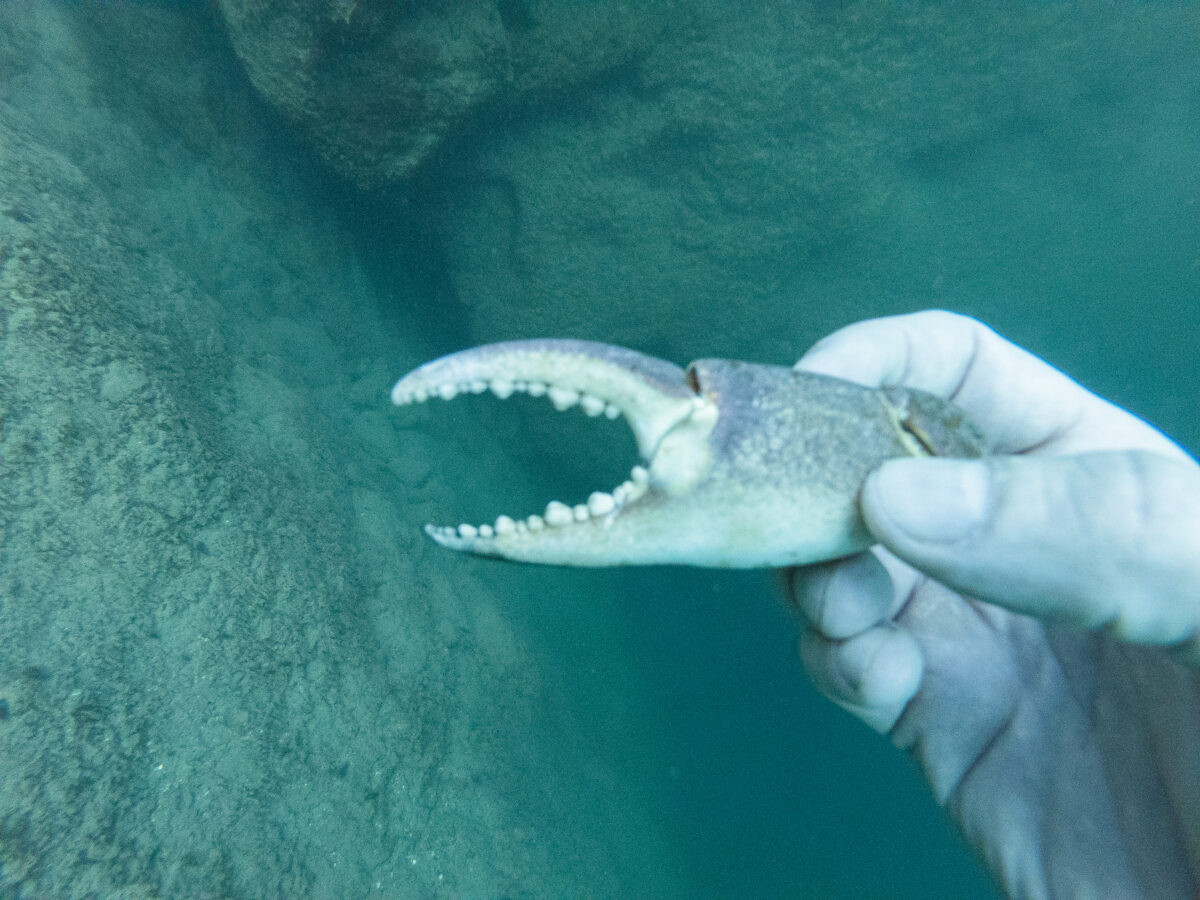
Found this on the bottom. This was a pretty big crab for freshwater!
The third dive I took, called Arthur Kennedys, treated us to volcanic scenery as it took us down and along sheer, underwater cliffs, overhangs, and walls. This felt a bit different than an average wall dive given the volcanic nature of the rock.
This is considered to be a good site to dive deeper, but the volcanic scenery at shallow depths was just as good in my opinion. Given the nature of a lake, visibility isn’t the best, so things start getting dark pretty fast.
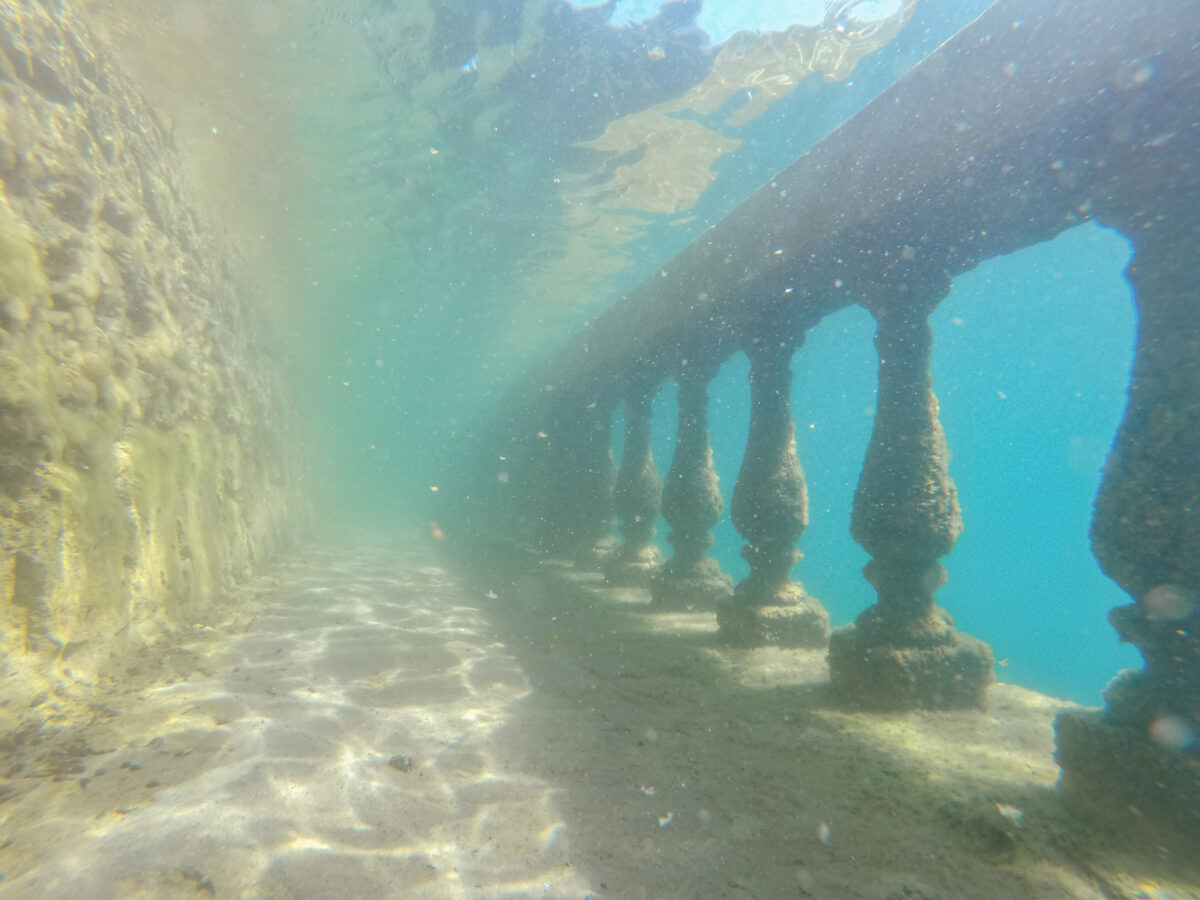
I wish it had been deeper, but it was still pretty cool seeing this from underwater.
Water Temperature
One important thing to be conscious of is the water temperature.
You’ll be fine up near the surface where year-round, the water temperature hovers around 70 degrees Fahrenheit (21 degrees Celsius).
In spite of the many fissures spouting warm water, as you get deeper, things begin to cool off fast.
Due to this, you’ll be wearing a two-piece 7mm wetsuit. I do have a picture of me in the bottom half but I’ll have to spare you the sight of me wearing what looks like a large pair of overalls.
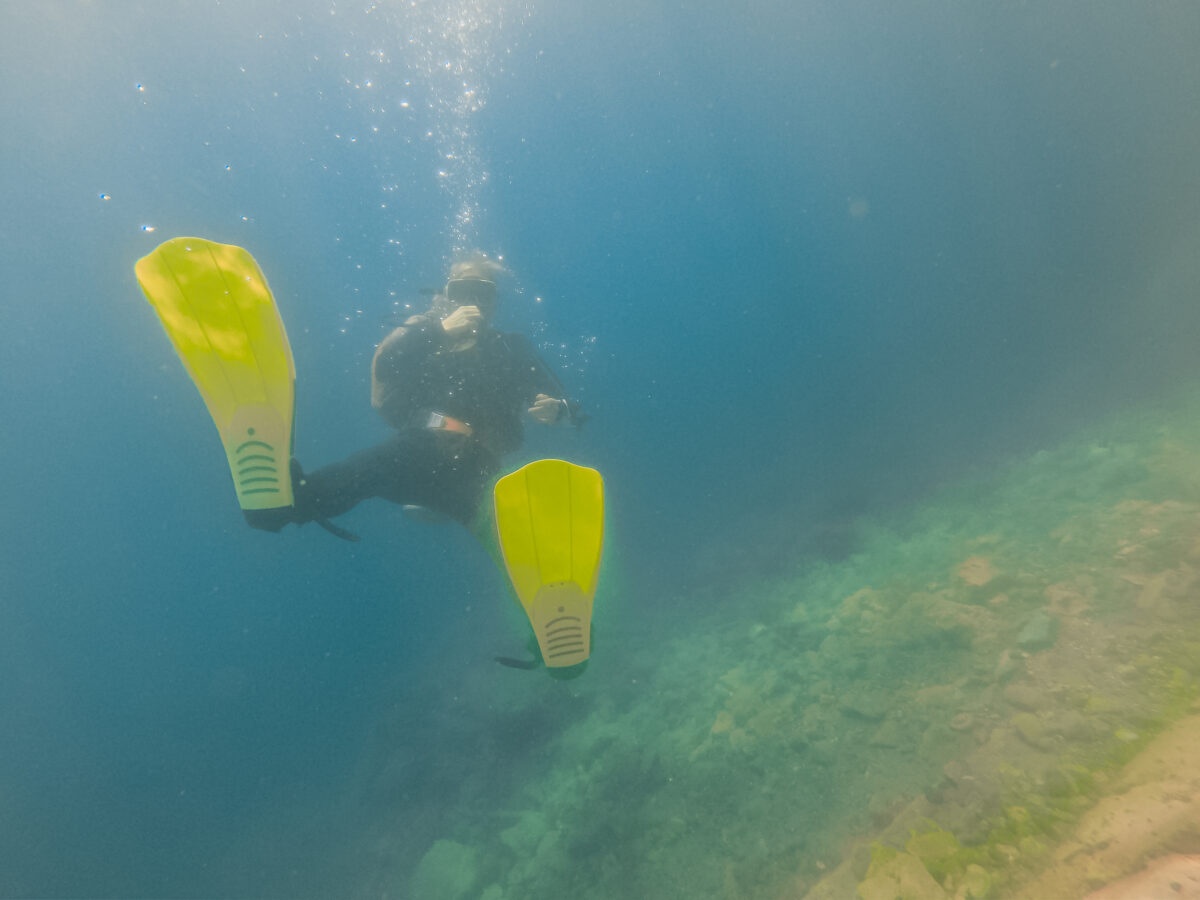
My dive partner equalizing while taking a seat.
Diving at altitude
Any time you go scuba diving at an altitude of higher than 300 meters (1000 feet) above sea level, you’re altitude diving.
Since diving in Lake Atitlan takes place at 1,500 meters above sea level, this is a high-altitude dive that comes with different risks and requirements.
If you’re not a diver, this might sound confusing, but the higher the altitude, the greater the change in pressure through your first thirty feet of depth. This is because the ambient air pressure is less at altitude than it is at sea level and it decreases as you move higher.
Before you even get in the water there will be a safety briefing where they go over air and water pressure, explaining how it will affect you differently than it does in the ocean.
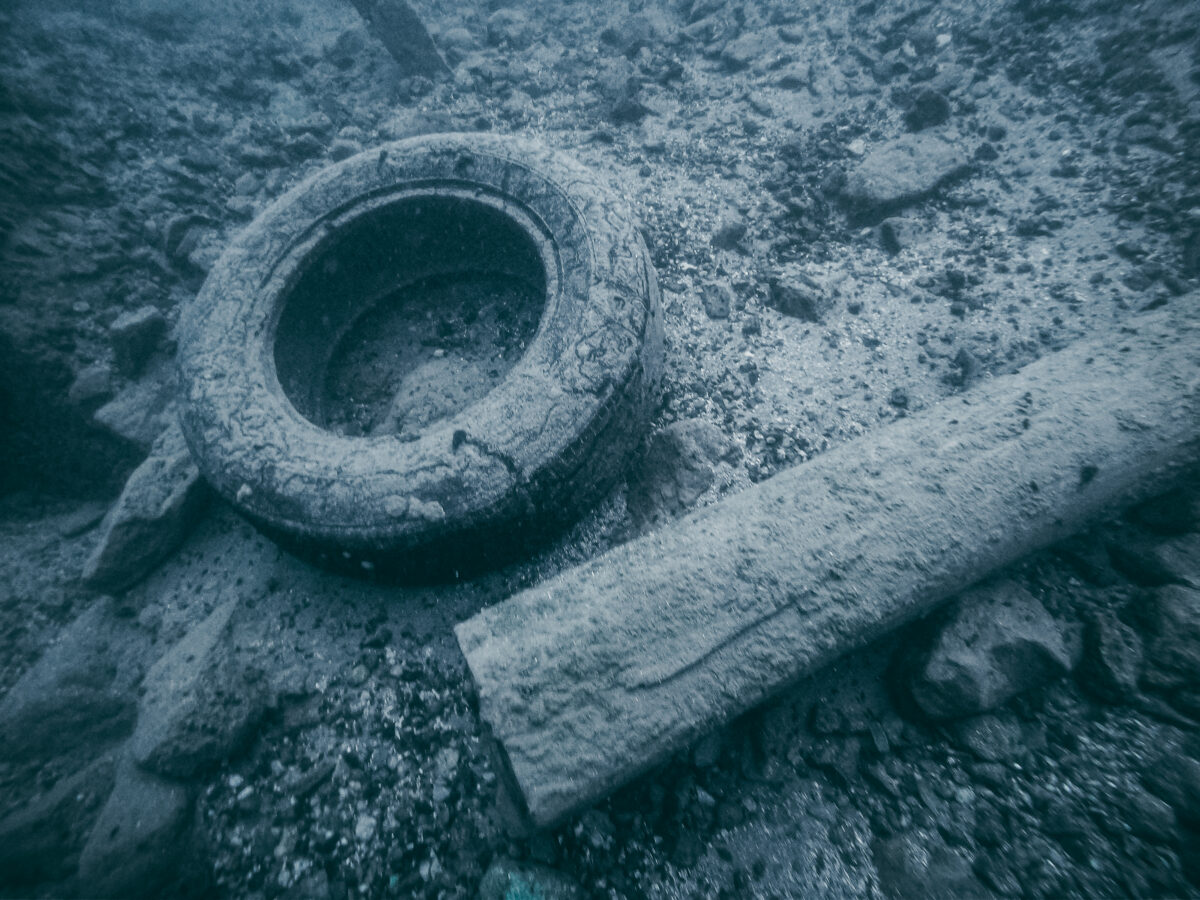
Unfortunately, where there are humans, there will be trash.
No leaving the lake!
Certified divers already know that they aren’t supposed to fly for twenty-four hours after diving.
But did you know that with diving in Lake Atitlan, you’re already so high up that you can’t leave the lake for twenty-four hours either! That’s because the crater’s rim is so much higher up, that just by driving out of the crater, you’re at risk of experiencing decompression sickness (DCS).
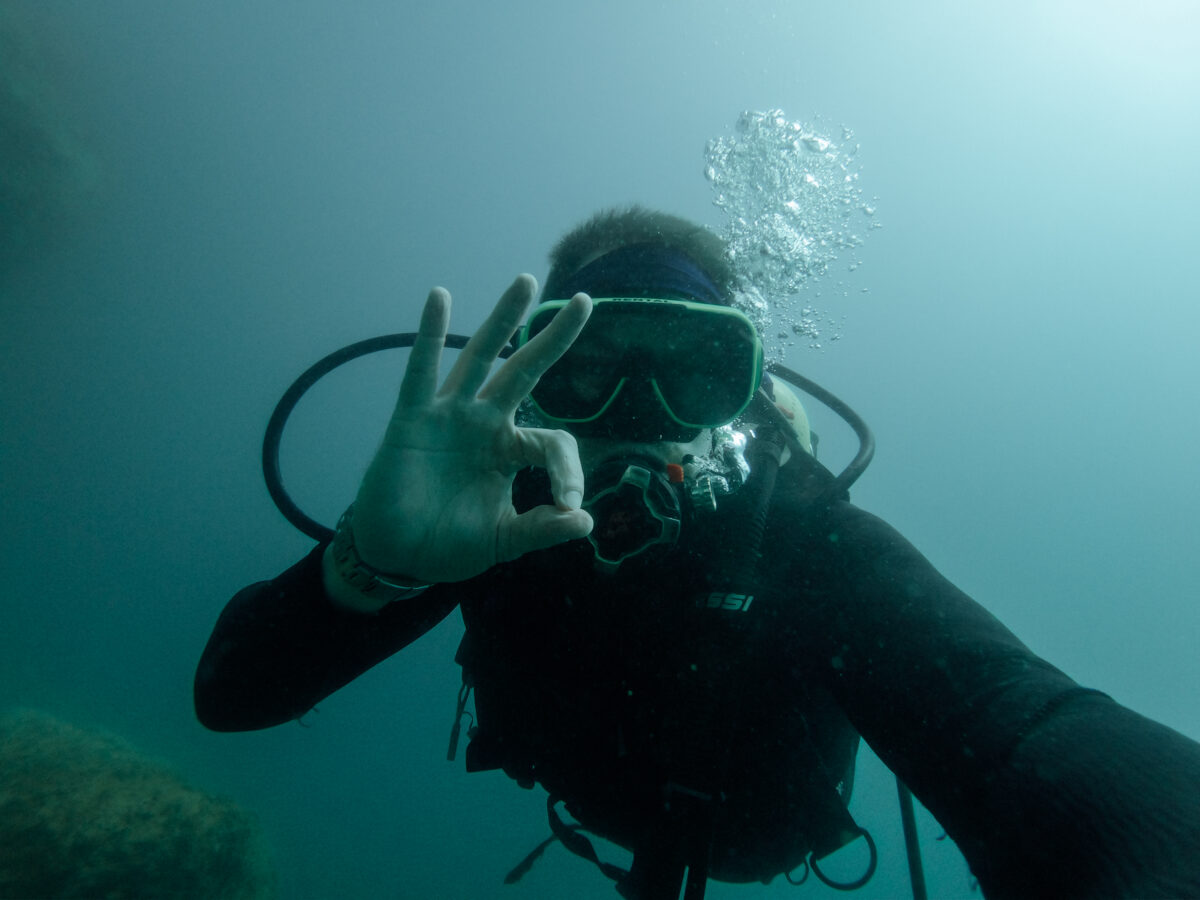
The “OK” hand signal is the first one that divers learn. As a “demand-response” signal, you use it to ask if other divers are okay. They MUST use it as a response back to you unless there is something wrong.
Dive Costs
Diving with ATI Divers is cheap when compared to more commercial places you’ll find in touristy areas.
Here, it only costs you $45 for a one-tank and $79 for a two-tank dive! That’s way cheaper than any place you’re going to find in the Caribbean!
Never been scuba diving before? The Discover Scuba Diving program will only cost you $70. This includes a short educational class and a one-tank dive with an instructor.
This is cheap as well. Where I just stayed in the Bahamas, the cost for discover scuba was $190 which is insane. Granted that was the place where a pizza cost $51. Seriously.
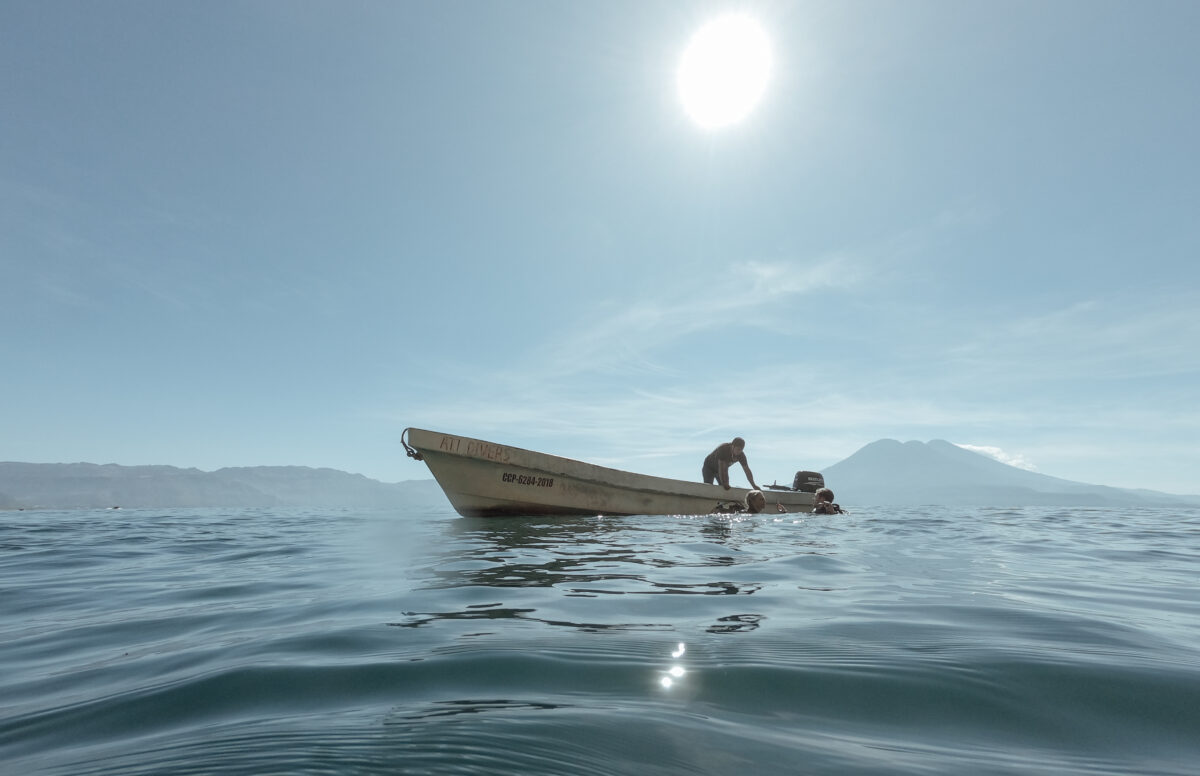
Time to get back in the boat!
Altitude Specialty Course
Given the unique nature of diving in Lake Atitlan, in addition to the standard PADI certifications, ATI Divers also offers the rare, Altitude Specialty Course.
The altitude specialty course is for certified divers who want a greater understanding of how pressure affects how they dive.
It goes in-depth about things like why altitude diving is different, how it affects your equipment, how dives are planned at altitude, and what different physical conditions are involved.
The course consists of a two-tank dive, plus a classroom session.
The cost for the altitude specialty class is $115.
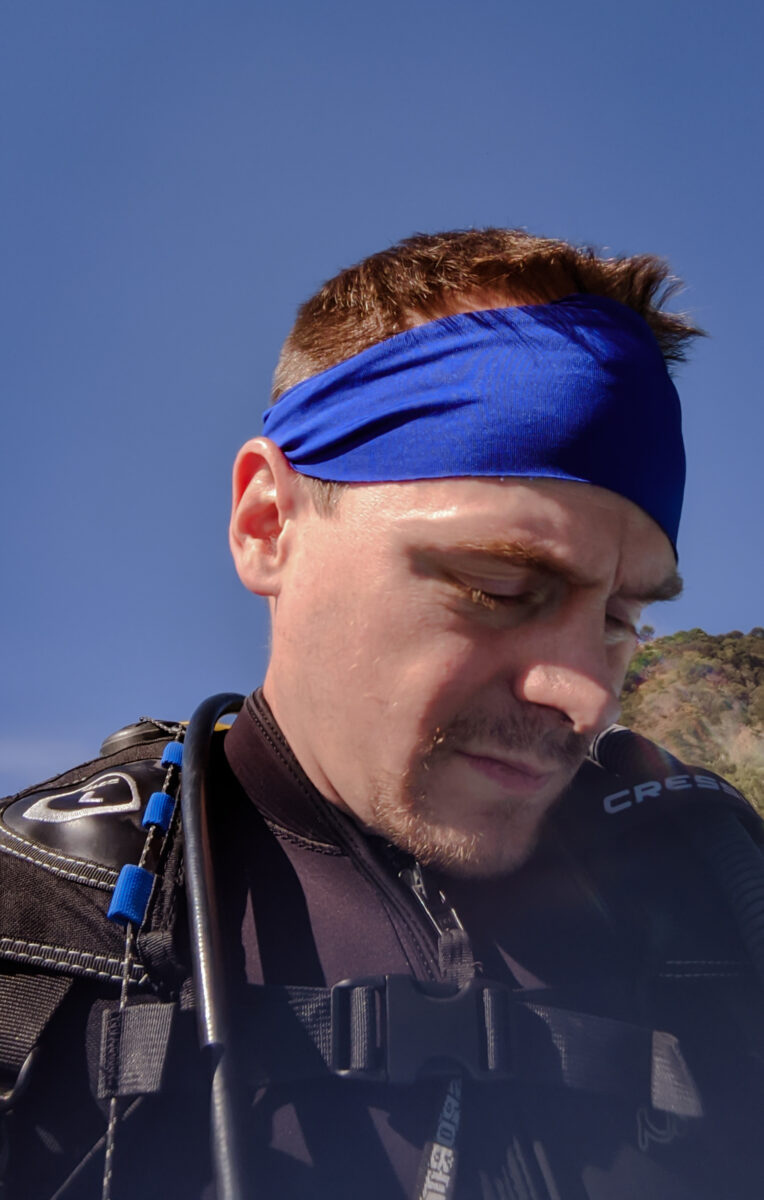
RIP to my blue headband. You are missed.
So, do you fancy a dive?
What do you think? Is a high altitude, freshwater dive, inside of an ancient volcano, that’s hidden away in the middle of a jungle something you’d be interested in experiencing? Boy is that a mouthful!
Let me know in the comments below!
DID YOU ENJOY THIS ARTICLE? PIN IT!
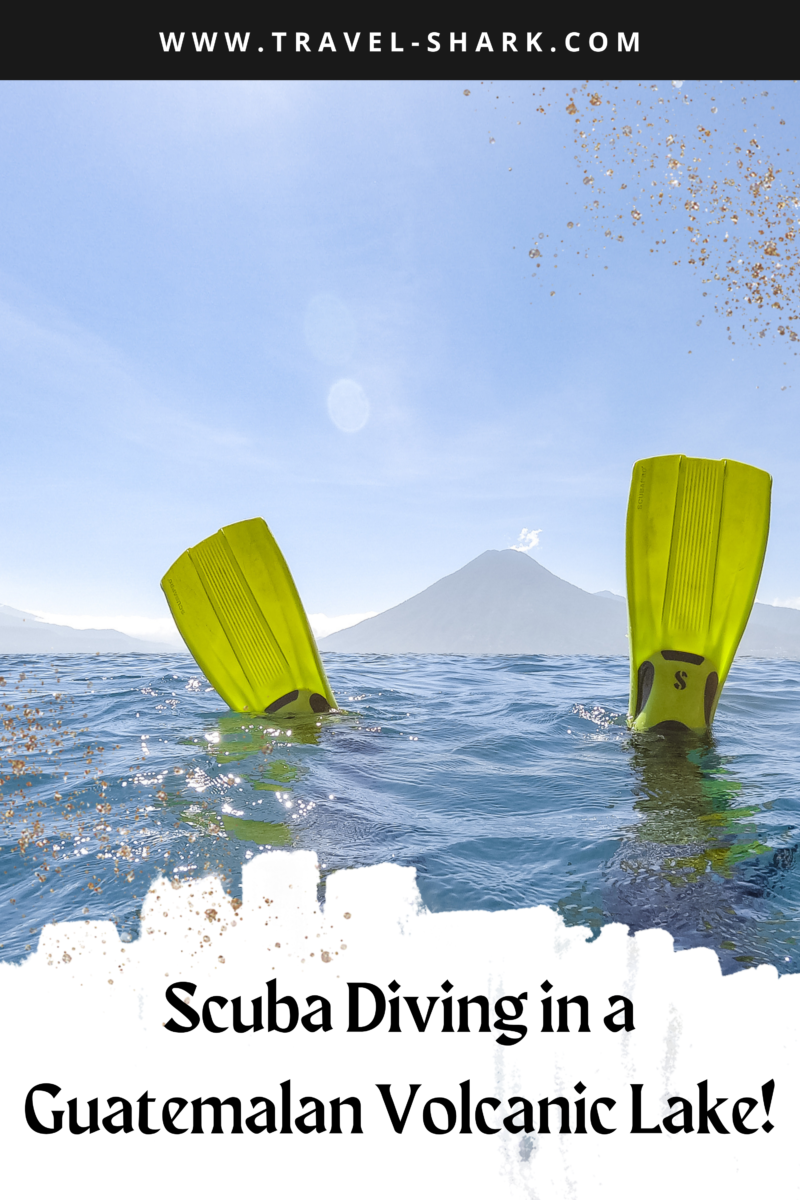

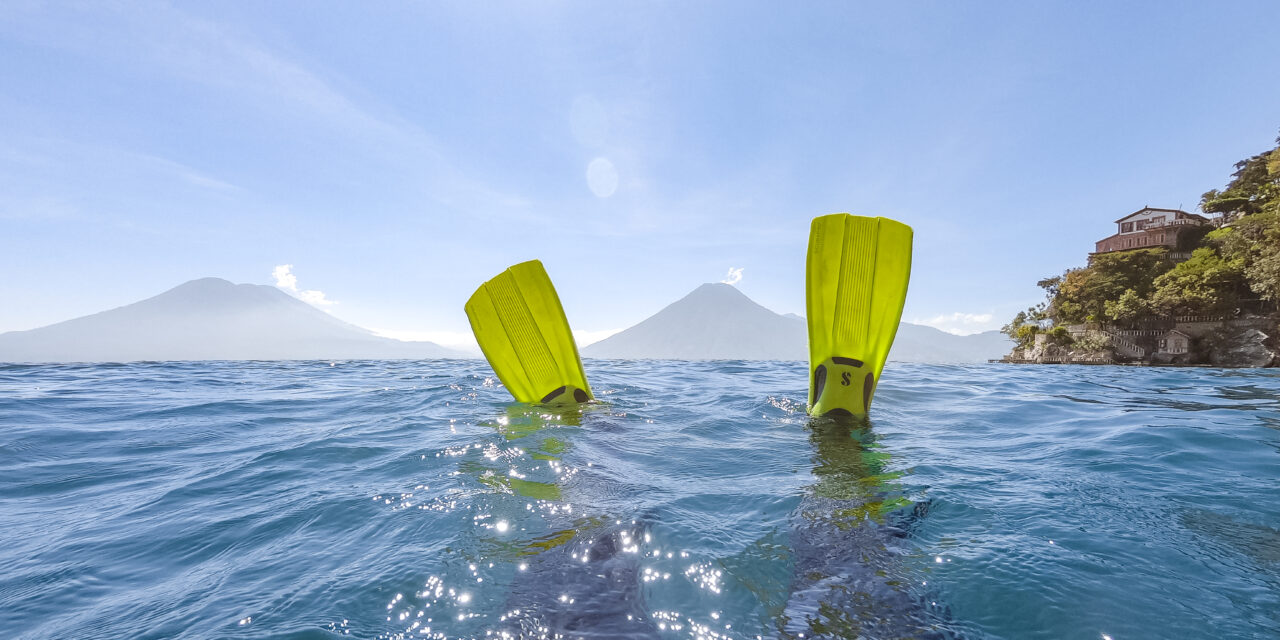
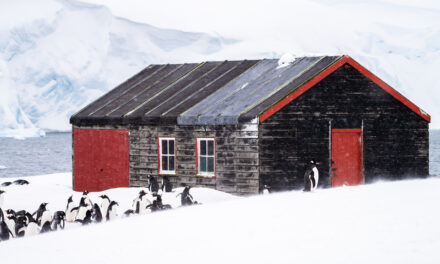
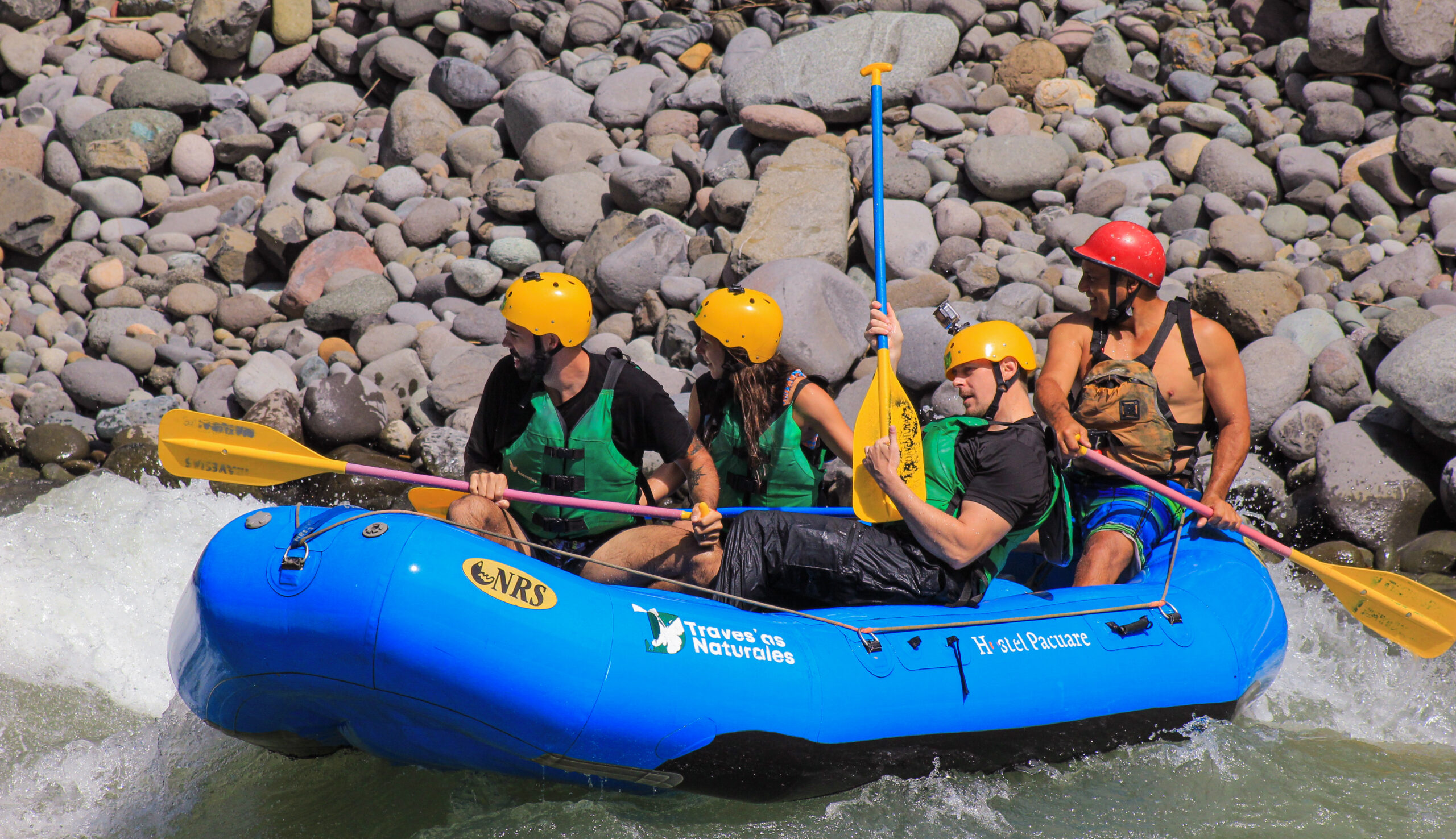
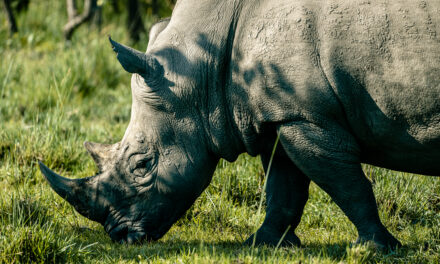
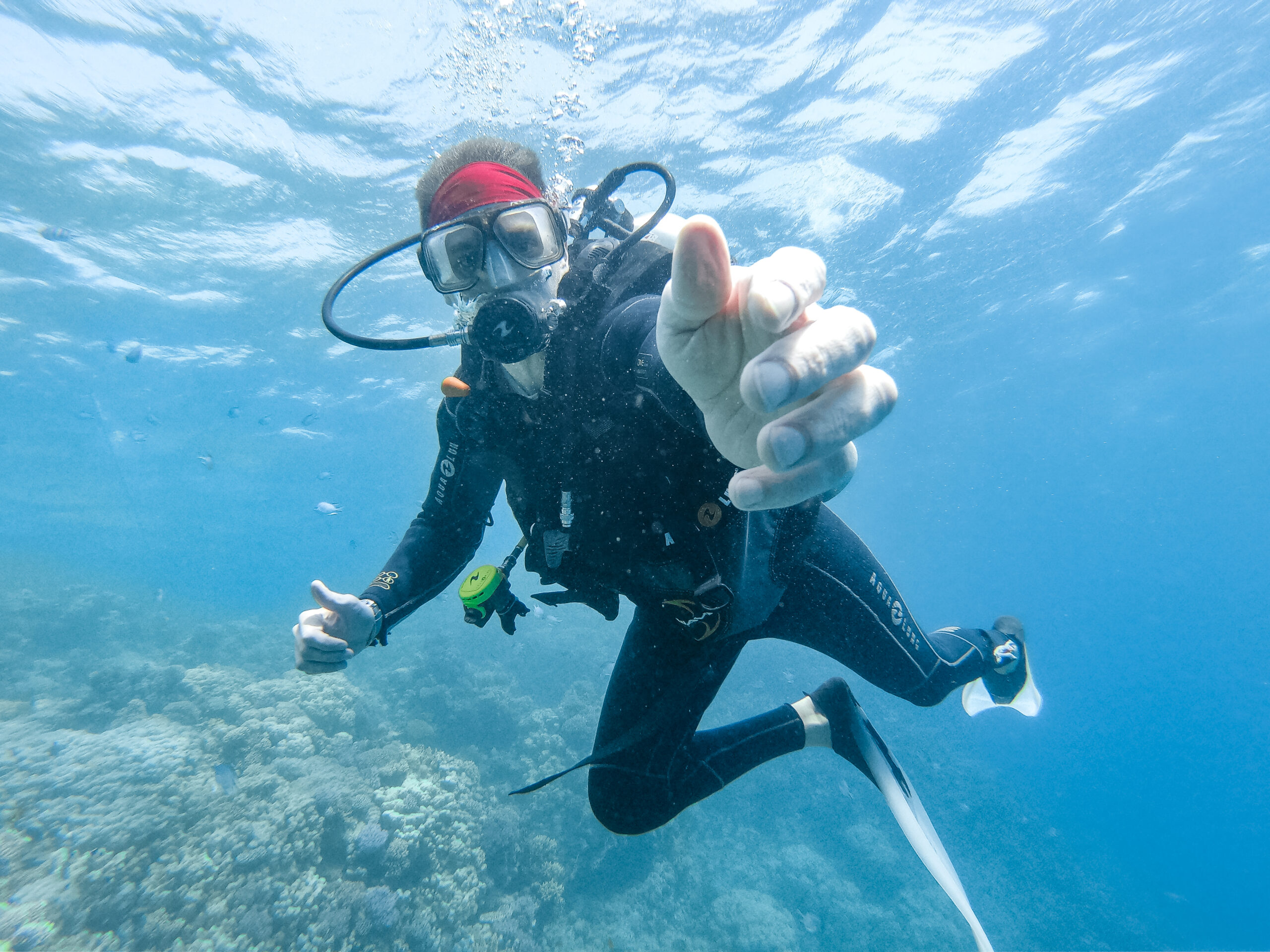

[…] more information, you check check out this guys experience of diving in Lake Atitlan. ATi DiVERS is the company that offers the diving courses, and there are several to choose […]
[…] more information, you check check out this guys experience of diving in Lake Atitlan. ATi DiVERS is the company that offers the diving courses, and there are several to choose […]
[…] more information, you check check out this guys experience of diving in Lake Atitlan. ATi DiVERS is the company that offers the diving courses, and there are several to choose […]
[…] Lodge Eco-Resort & Nature Reserve on Lake Atitlan, Guatemala was pretty nice, but not anything I’d write home about. They did after all have the worst […]
[…] an avid scuba diver I’m always looking for my next exciting dive. I’ve been diving in several locations now, a few of them more than once so I wanted to do something […]
thanks a bunch Patrick, a 24 hour decompress hold on location after your dive to avoid DCS, wow didn’t know that and thanks……bob in cali……I guess I will hang for the BBQ after diving 🙂
Hey, yea it’s very unusual! Definitely a first for me lol